Exchange Residency Program
Program for 2017
Working together with Kuandu Museum of Fine Arts, ARCUS Project sends the artists from Japan to Taiwan and invited the curator from Taiwan.
Program Period
- KdMoFA:
- September 4 – October 2, 2018 (29 days)
- ARCUS Project:
- February 19 – March 6, 2019 (16 days)
Partner Institution – Kuandu Museum of Fine Arts, Taipei National University of the Arts [KdMoFA] (Taiwan)
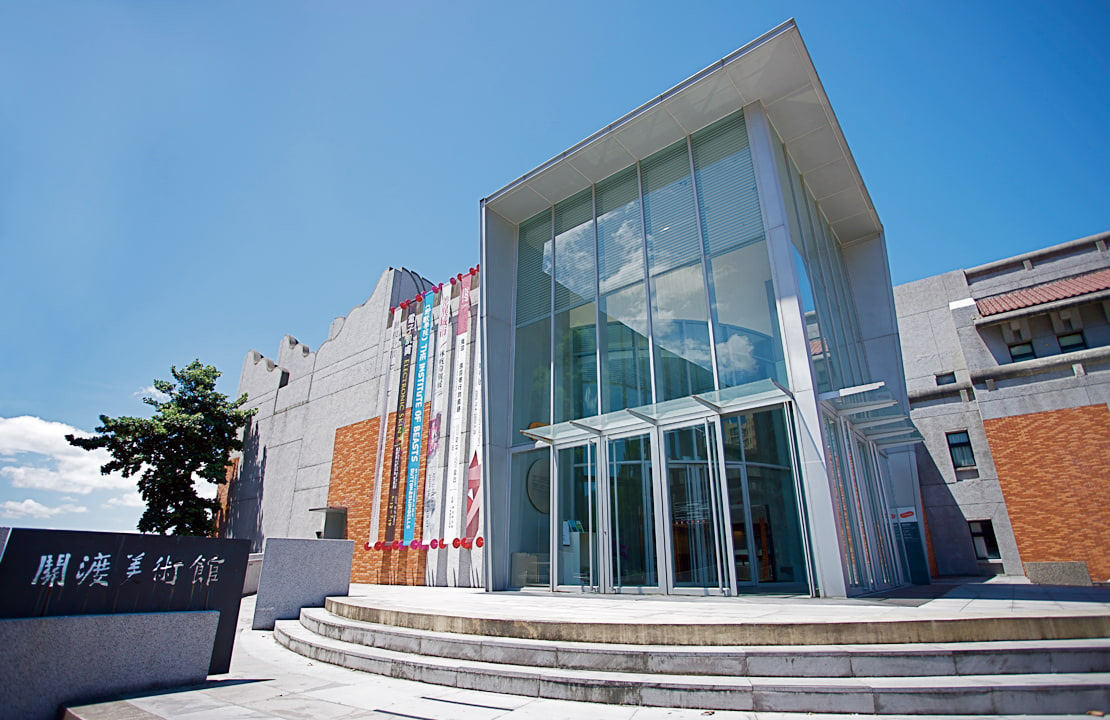
Referrer
Che Kyongfa (Curator, Museum of Contemporary Art Tokyo)
Selection
[Japan-based Artist]
Among the Japanese candidates selected by the ARCUS Project Administration Committee and Che Kyongfa, the referrer, the KdMoFA has selected two artists for this program.
[Taiwan-based Curator]
The curator was recommended by Hospitalfield, the partner institution.
Isomura Dan
Japan
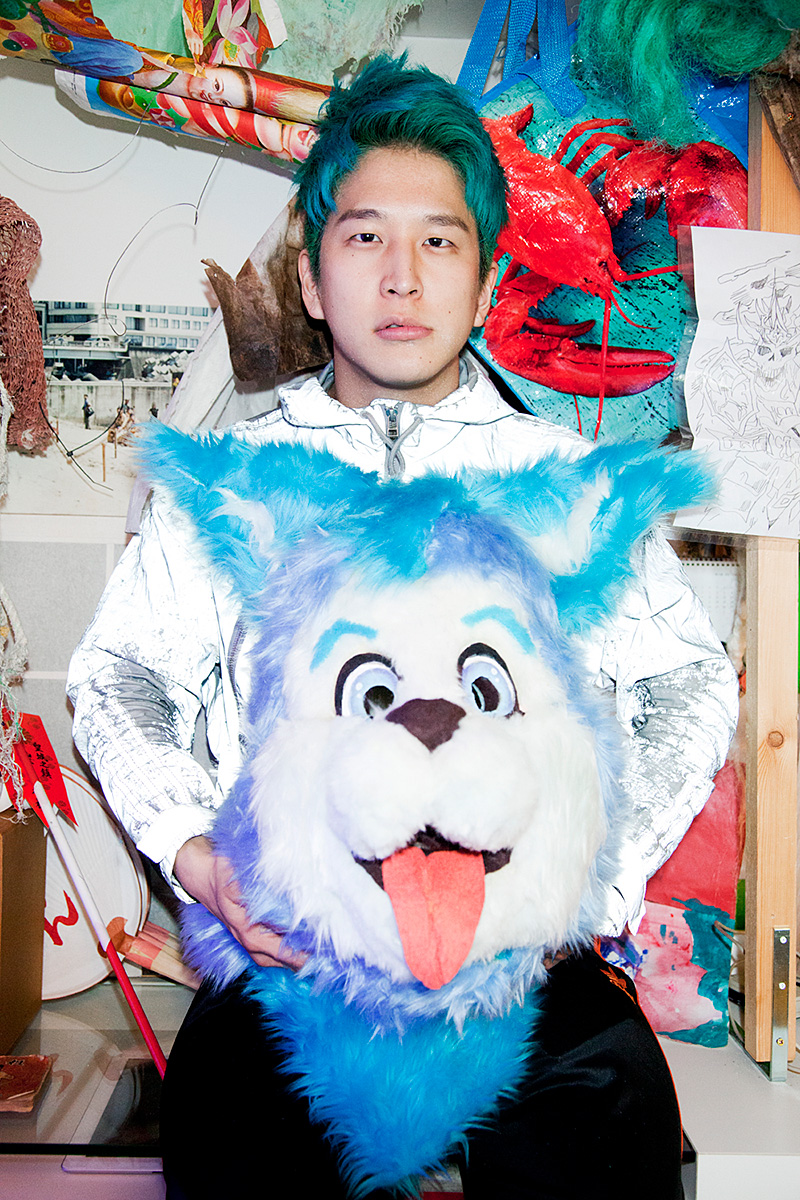
Born in Tokyo, 1992. Lives and works in Tokyo. Dan Isomura obtained his Bachelor of Fine Arts in Oil Painting from Tokyo University of the Arts in 2016 and also received honours from Genron Chaos Lounge New Art School in 2017. His major activities include solo exhibitions during residency programs in London and Tokyo: Two glasses of water/2000000000000000000000000 water molecules (The Vitrine, Central Saint Martins, London 2017); and A glass of water/1000000000000000000000000 water molecules (Youkobo Art Space, Tokyo 2017). He also participated in the pre-event program of KENPOKU ART 2016, Gei-Dai-Go (Ibaraki, 2015). Having organized parties at his home since 2016, he reconstructed and reinterpreted a party with Nepali immigrants, Home Party #1 into an installation at a gallery space as Home Party #2 (Chaos* Lounge Gotanda Atelier, Tokyo, 2017). Through creating installations and paintings with reference to religious art, physics, aesthetics on social media, and vernacular cultures of the immigrants with whom he encountered in Japan and travel destinations, Isomura aims to showcase the current social and political landscape at the transition of globalization.
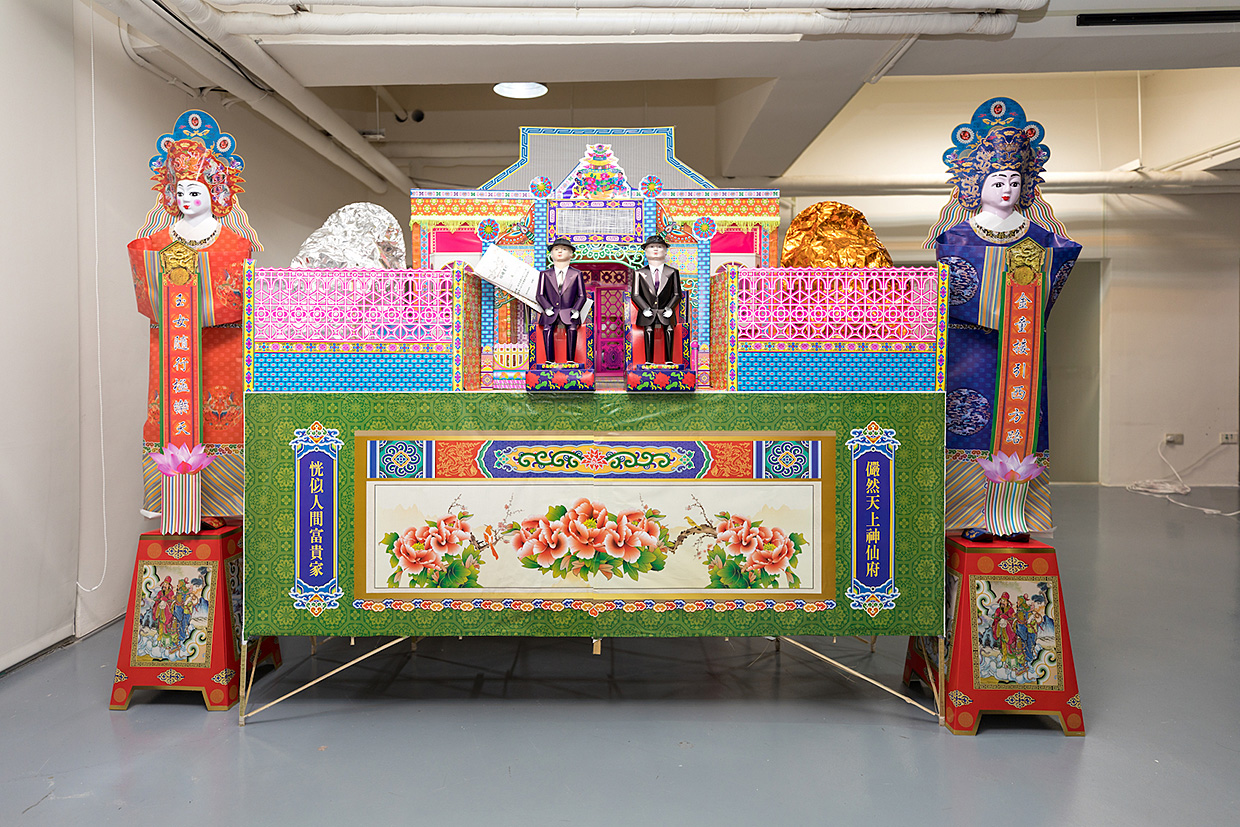
Study for Joss Paper for the Lovers (Jacques Picoux and Tseng Ching-chao’s Home)
Photo by Huang Yung-En
Photo courtesy: Kuandu Museum of Fine Arts, TNUA
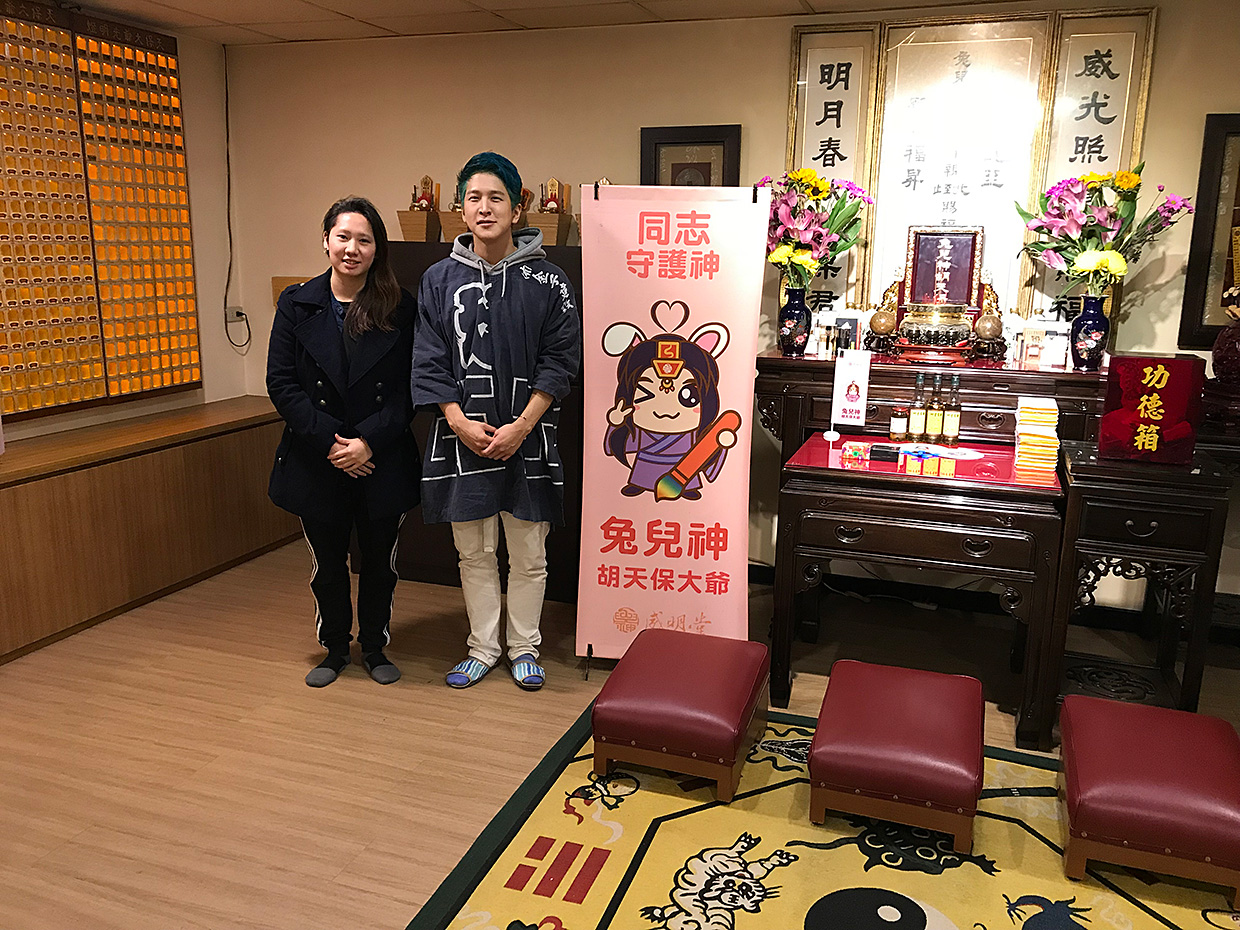
Visit Wei-ming temple dedicated to LGBTQ people
in Taipei City
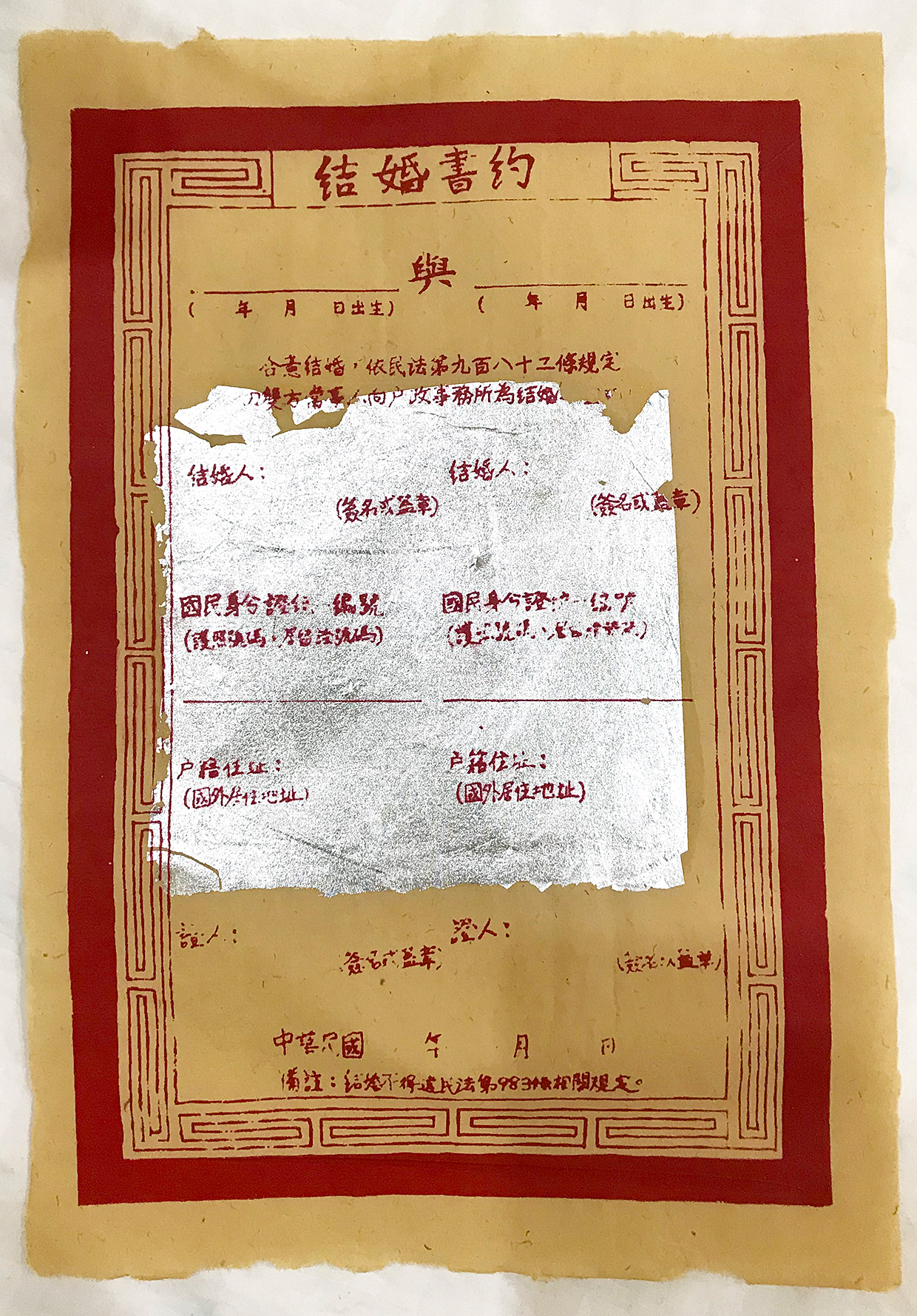
Silk screen
Reason for Nomination
In his recent works, Isomura has taken up the religious outlook of good and evil inherent in Thai contemporary religious art and also the issues surrounding asylum seekers residing in Japan. In a kitchified and humorous manner, he sheds a critical light on the border between “this side” and “that side” that lies so deep within our gaze. What allows Isomura’s subtle distancing and communication with the object of his confrontation may be Isomura’s particular gaze―a gaze that allows him to see himself and Japanese society objectively. In the current landscape where, on the one hand, boundaries and categories of all things are ambiguous yet, on the other hand, seem to intensify so excessively, it is exciting to see how Isomura, who treats issues with a unique eye, develops his practice in Taiwan. (Che Kyongfa)
Artist Statement
During my stay at the Kuandu Museum of Fine Arts at Taipei National University of the Arts, I aimed to conduct research on LGBTQ history in Taiwan as well as religious forms of expression that have continued to change and update until the present.
Though Taiwan and my own country of Japan have many things in common and have influenced each other in a variety of ways, I was interested in the large disparity that exists between them whereby Taiwan became the first nation in Asia to legalize same-sex marriage while Japan has still to make any legislative advances in the rights of sexual minorities, and starting from this I attempted to search for points of divergence. The greatest yield during my residency was gaining opportunities to visit various people and places such as a curator who planned the first LGBTQ-themed exhibition at an Asian national art museum, a mausoleum venerating a god who serves as a guardian for LGBTQ people, members of the gay community who participated in the Sunflower Student Movement, and the organizer of Taipei’s largest gay club event.
In terms of religious expression that has continued to develop and update (in particular, by the masses), this is not an interest confined to Taiwan but actually something that concerns me whenever visiting somewhere, since I believe that it is often possible to see in such forms of expression reflections of what a society is really like in each period of history without the interference of authority. In zhizha, the paper used as an offering to the dead at Taoist funerals, however, my interest shifted toward the relationship between the dead, for whom time has stopped, and an offering that is constantly updated, and even after returning to Japan I have continued to produce work in my practice influenced by the concept of zhizha.
mamoru
Japan
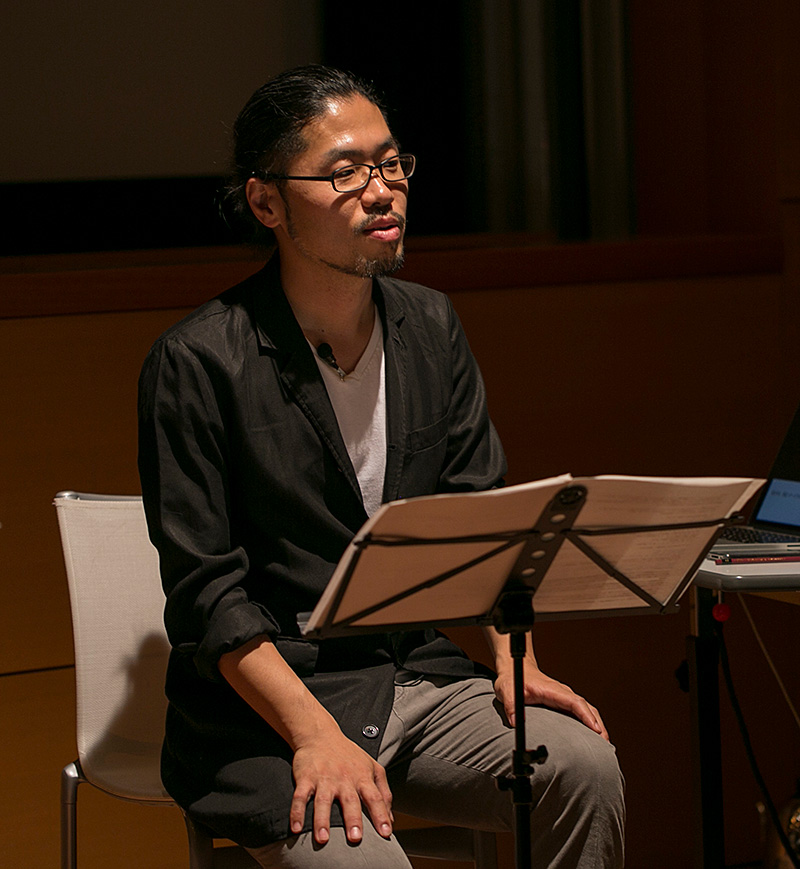
Born in Osaka, 1977. Live and works in Tokyo and Izu. In 2016, mamoru obtained Master Artistic Research from The Royal Academy of Art The Hague/The Royal Conservatory. Recipient of Artist Overseas Training Program promoted by Agency for Cultural Affairs. Recent exhibitions and performances includes a long listening journey of a Possible thiStory especially of Japanese & Dutch & something more(Yuka Tsuruno Gallery Viewingroom, Tokyo, 2016), Time of Others(Museum of Contemporary Art Tokyo, Queensland Art Gallery of Modern Art, 2015-2016), THE WAY I HEAR/scores for imagination(National Museum of Art Osaka, 2015), MEDIA/ ART KITCHEN SENSORIUM (Ayala Museum, Manila, 2013).
The latest project attempts to graft a “possible history” with actual present in order to embody the plurality of histories. It consists of lecture performances, film, text and sound works. Other series named THE WAY I HEAR, mamoru transcribes the soundscape of the specific locations into texts through listening and extensive research on the history and/or geography; the presented soundscape can be of the past, present, future, and imaginary. Also “etude for everyday life” features subtle sound and ephemeral phenomenon found in everyday life. mamoru attempts to reveal an alternative world through listening.
http://www.afewnotes.com
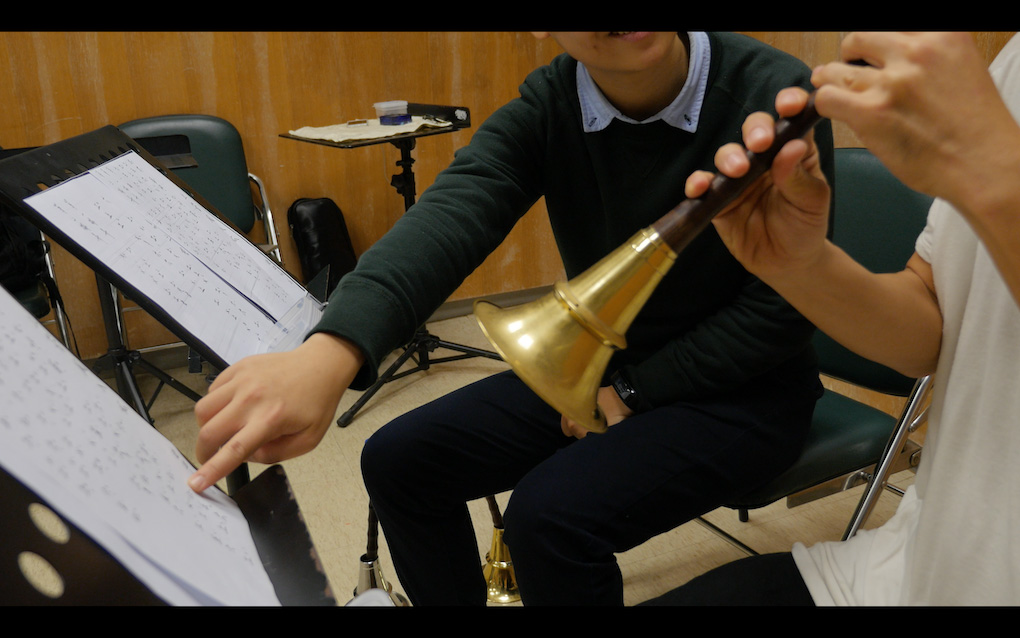
Having a suona lesson
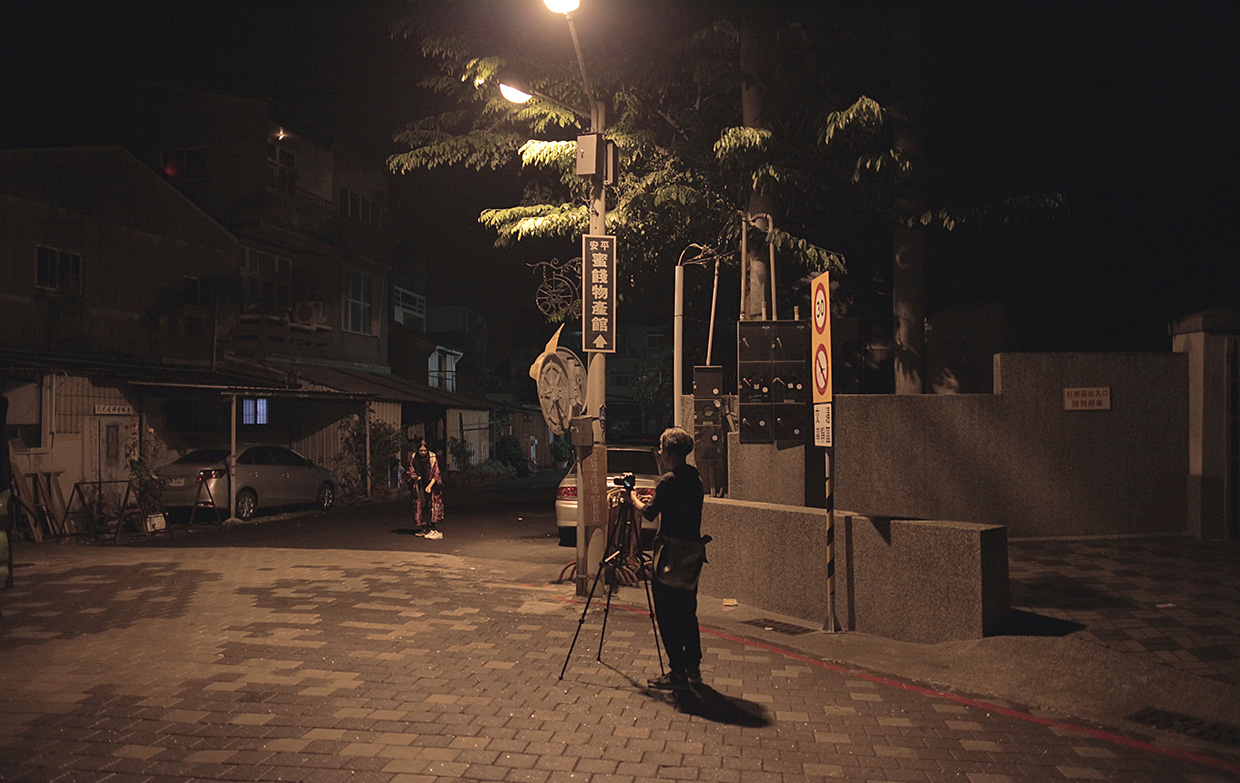
Film shoot at Zeelandia Fort
Photo credit: Chaong Wen Ting
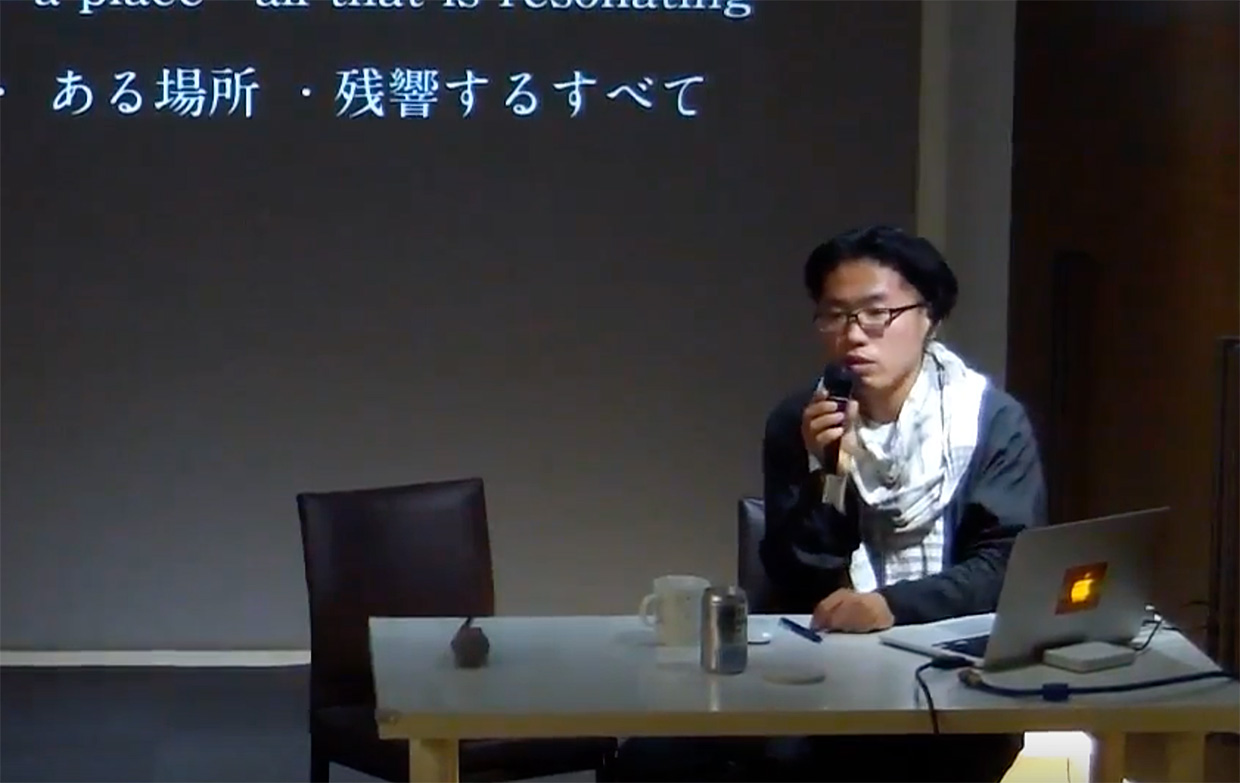
Artist talk at ET@T
Reason for Nomination
With “listening” as his starting point, mamoru has been presenting video works and lecture performances that deal with particular spaces and times. Recently, he has continued to conduct research on historical incidents and figures and, despite not being able to be literally see or know them, he investigates ways to recall or imagine them using abstract and poetic texts and physical movements. Viewers get to read the images and narratives from these fragments, but these works by mamoru, in fact, question knowledge and what it means “to know.”
Through his research of a 17th-century publication, mamoru has explored connections between the Netherlands, Indonesia, and Japan. It is interesting to see how his research will evolve during his residency in Taiwan. (Che Kyongfa)
Artist Statement
For this Exchange Residency Program, I was able to see significant results in relation to the artistic research project I have carried out called a long listening journey of a Possible thiStory especially of Japanese & Dutch & something more. At the base of this research is Atlas Japannensis, published in the Netherlands in the 17th century and featuring numerous illustrations introducing Japan, and the unknown past of Indonesia and Taiwan where the histories of the Netherlands and Japan intersect. This time I did fieldwork and a shoot at Fort Zeelandia, located in the present-day district of Anping in Tainan, Taiwan, and built by the Dutch East India Company around the 17th century in the south of what was then known as Formosa. During my stay, I edited my footage and put it together with footage I had already shot in Indonesia and Japan, and then presented it at the 10th Yebisu International Festival for Art & Alternative Visions in February 2018. (Screenings are also planned for Hong Kong in March 2019, Vienna in April 2019, and Taiwan in July 2019.) Incorporating my research on the suona, a traditional Taiwanese instrument that I encountered during my stay and developed an interest in, and the results of this as essential components of the lecture performance I had already planned, for my presentation at Yebisu International Festival for Art & Alternative Visions I was also able to invite a suona musician whom I had met during my residency.
Ho Yu-Kuan
Taiwan
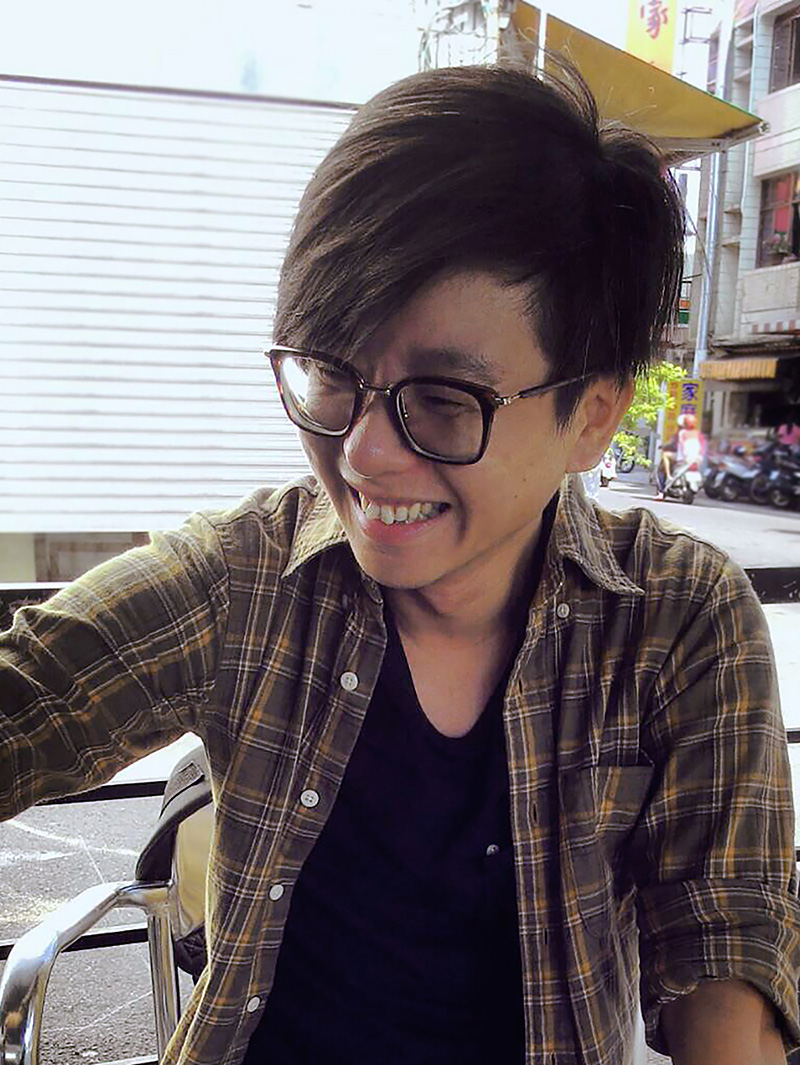
Born in Tainan, Taiwan in 1983. Independent curator. Lives and works in Taipei, Taiwan. In 2013, Ho Yu-Kuan obtained his MA at Graduate Institute of Art History and Art Criticism, National Tainan University of the Arts. Ho’s curating experience focuses on colonial history in Asia, localism under globalization, and nation’s cross-bordering and boundary making. His recent curation includes Crossing the Straits (Run Amok Gallery, Penang, Malaysia, 2017), Rhetoric of Shame (Kuandu Museum of Fine Arts, Taipei, Taiwan, 2017), My Hometown Nan-Du: Deconstruct Nations, Reconstruct Home (Taipei Economic and Cultural Representative Office in Japan, Tokyo, Japan, 2016), Rat, Escaping from Dark (2015 Artist Fair Taiwan, Taipei, Taiwan, 2015). He also participated in art projects such as NML Residency & Nusantara Archive Project (observation team, 2017), Kau-Puê: Art Associate (editor, 2015), In the Twilight, Starting from the South: Tainan Art Space Now & Remembered 1980-2012 (co-author, 2012).
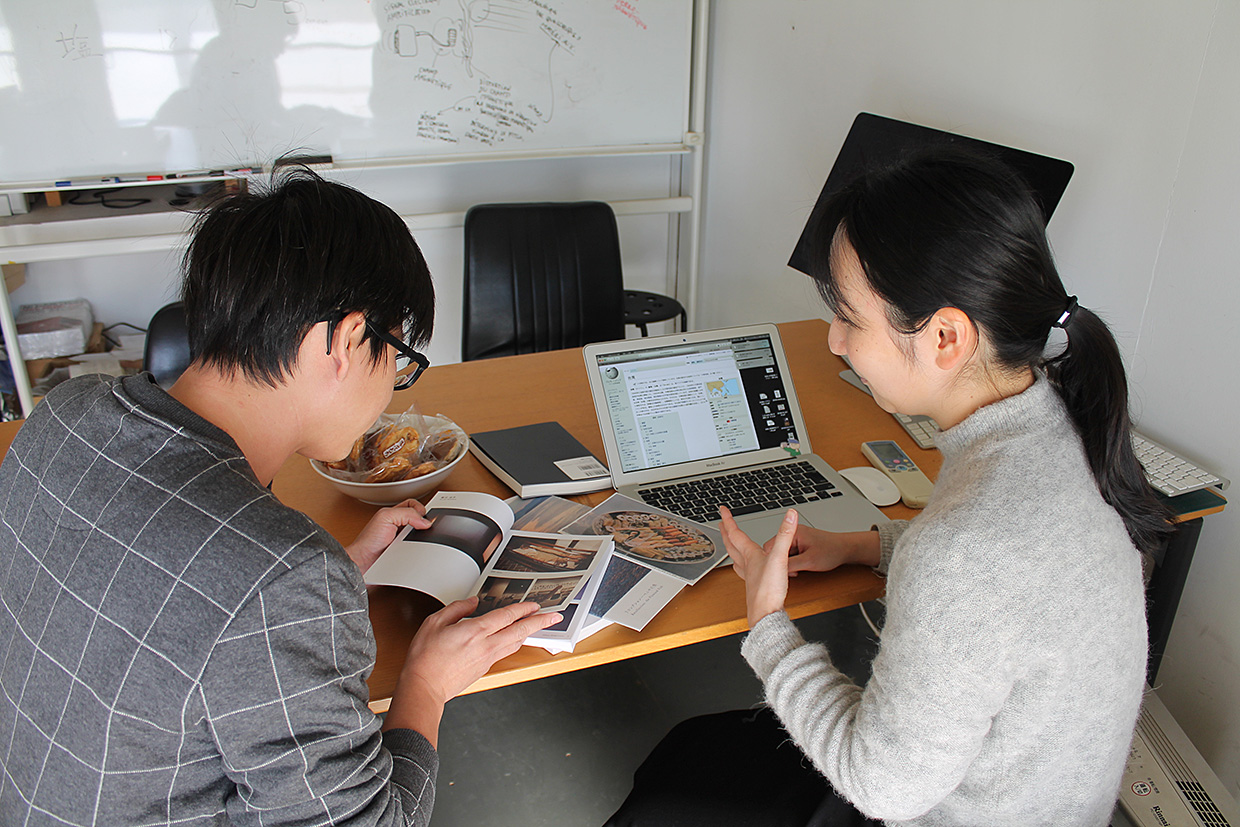
Studio visit to Sasakawa Haruko
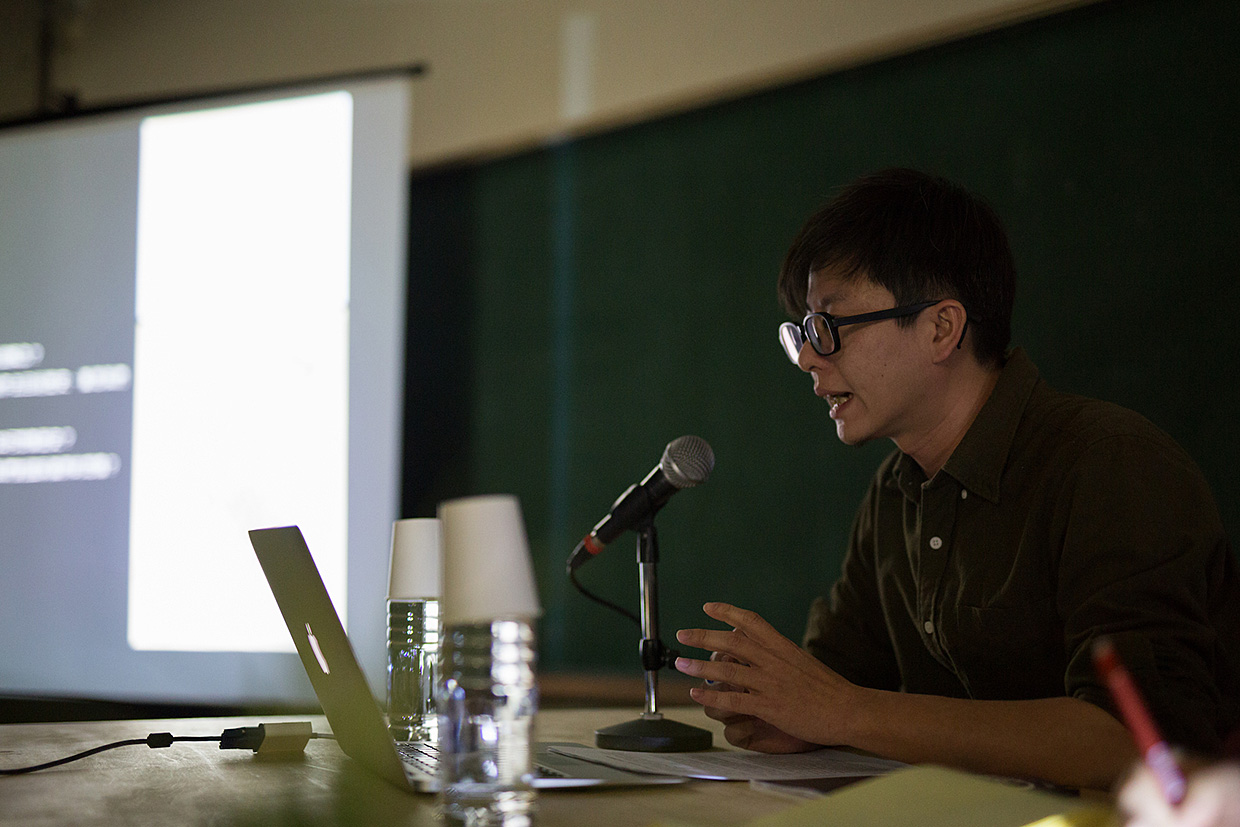
Presentation
Curator Statement
When we’re facing the history of colonization, how could we reveal the scar of our ancestors, and conceive the scar which used to exist? Although ideology is inevasible, artists try to recall the emotional family and local history to rebuild a possible observation of path and the following production, as to find out the past and imagine future.
There’s a Japanese artist, Haruko Sasakawa, who organized and participated in an exhibition SENSOU-GA STUDIES)at Tokyo Metropolitan Art Museum. I saw the way that how she dealt with the history and emphasized the gap of it, which interested me a lot. During my residency, ARCUS Project arranged me to visit her studio as to understand more about her contexts. While I got to know Sasakawa better, I understood that not only did she dealt with the history, but she also went back to the place where her grandfather served military service and reconstructed his experience in wartime from her perspective.
How can we present the subjectivity of art when Asia experienced multiple colonization? How could creators deal with these history-narrative paths? Multiple colonization of modern history of East Asia connects the fate of each other in the 20th century. What I was continuously observing and thinking during my residency was that how creators would re-demonstrate and look at the history, and how they could develop artworks when they look at the history.
Residency Report
Reports from Residencies in Taiwan and Japan
Date and Time: February 10, 2018
Venue: ARCUS Studio
Speakers: Isomura Dan, mamoru, Ho Yu-Kuan
Three participants in the program presented reports about their activities and shared their future plans. The event was an opportunity to gain insights through the perspectives of artists and curators into the cultural landscapes of Japan and Taiwan as well as the history and social issues that these two countries share, albeit from different positions.
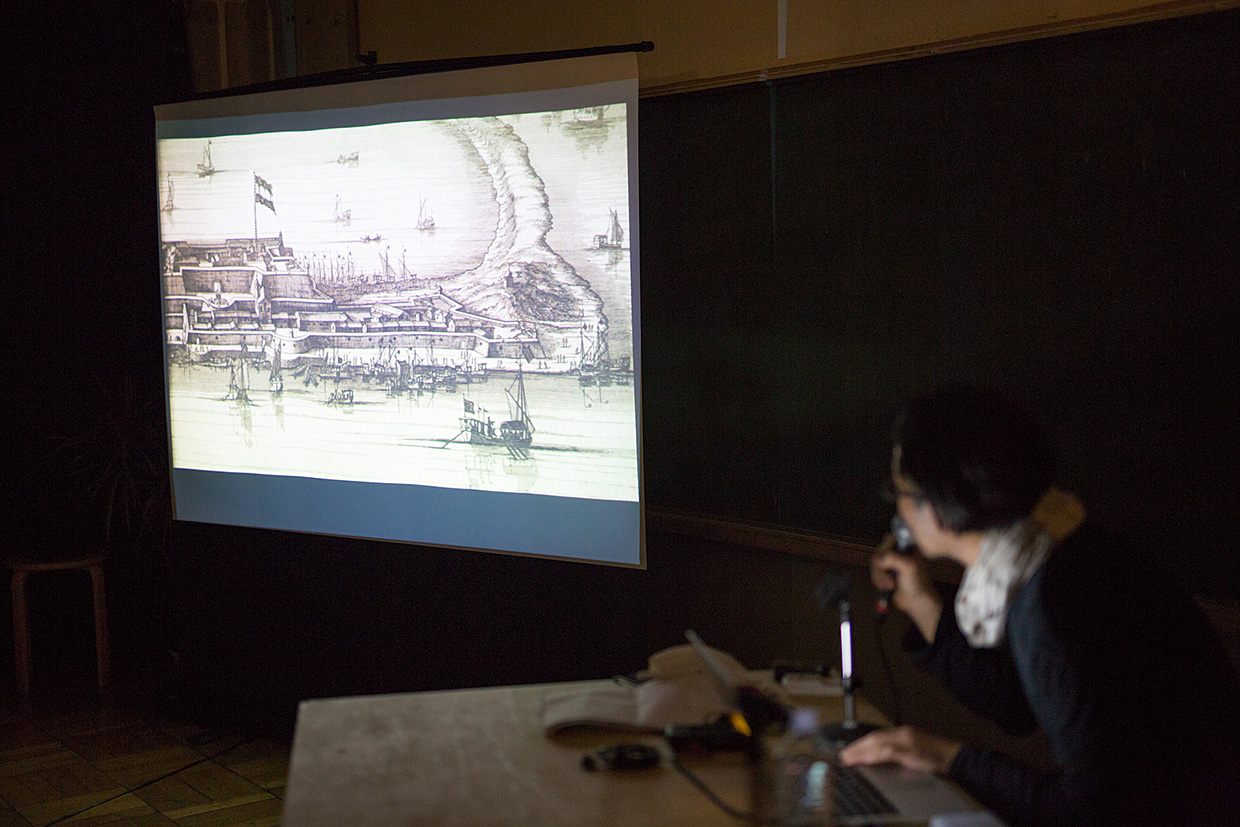
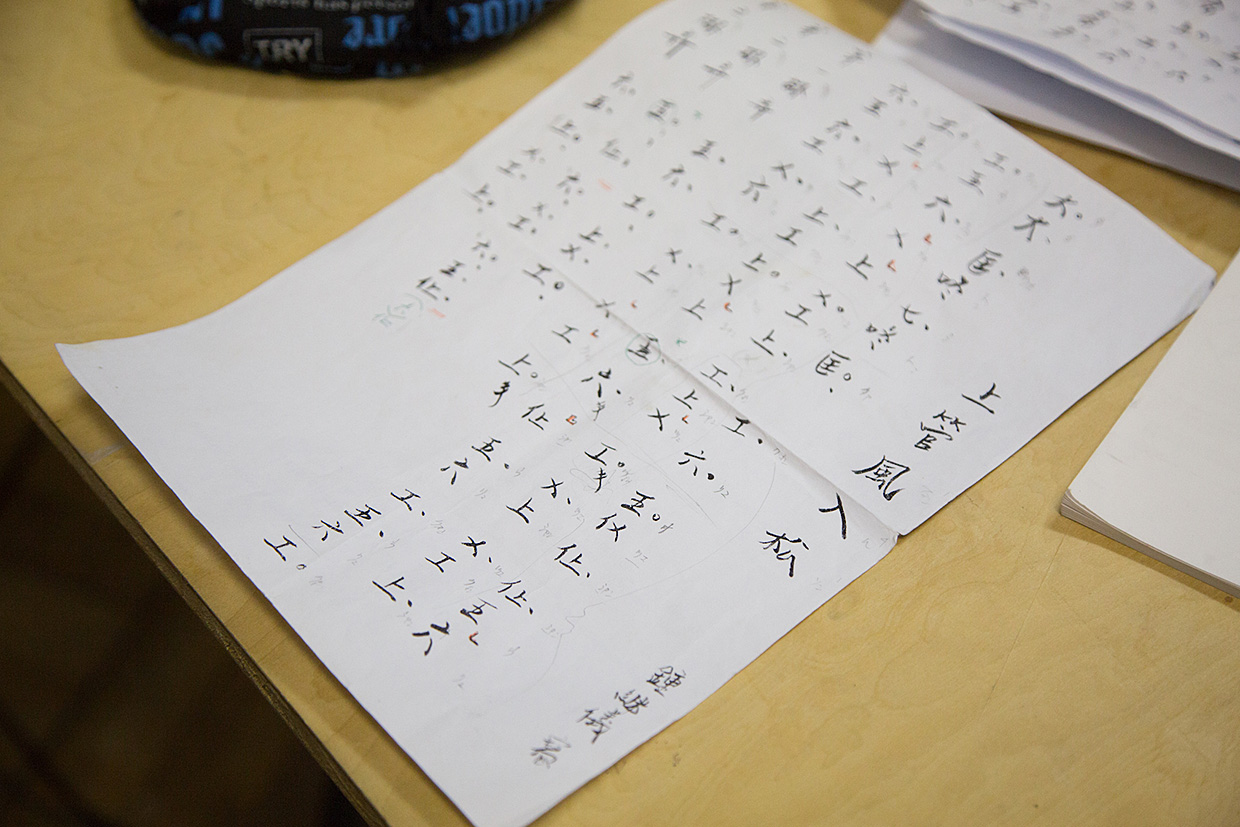
A suona score